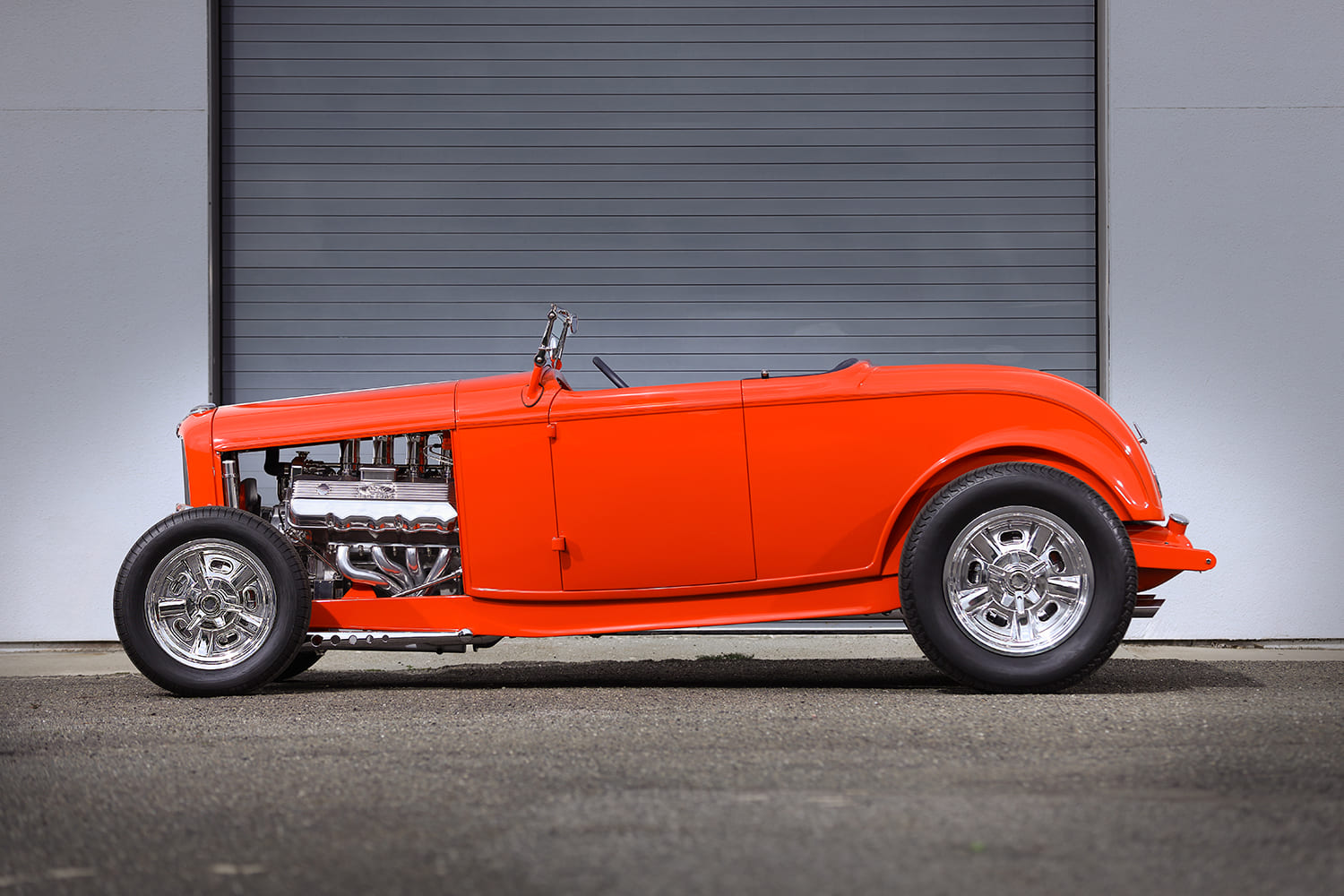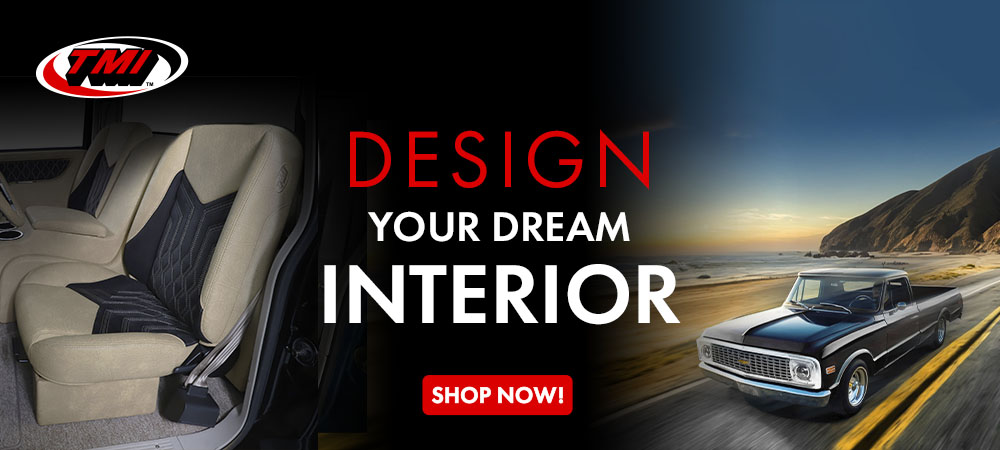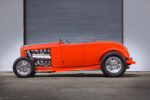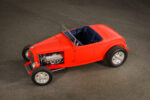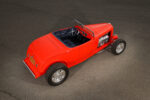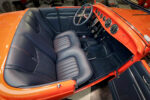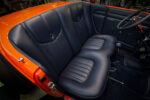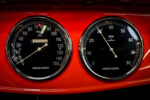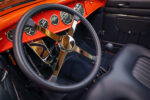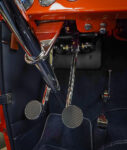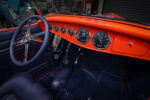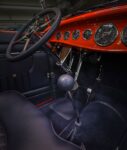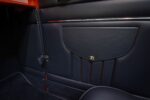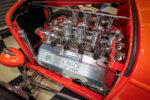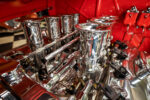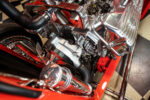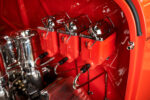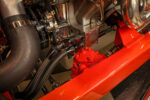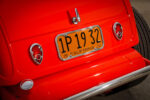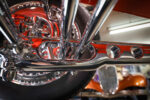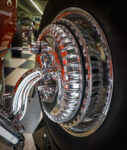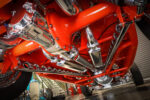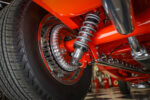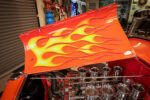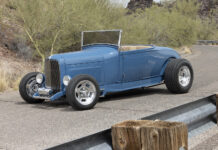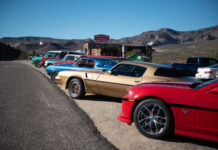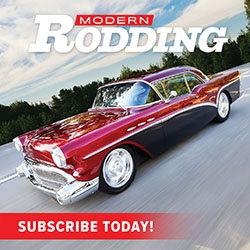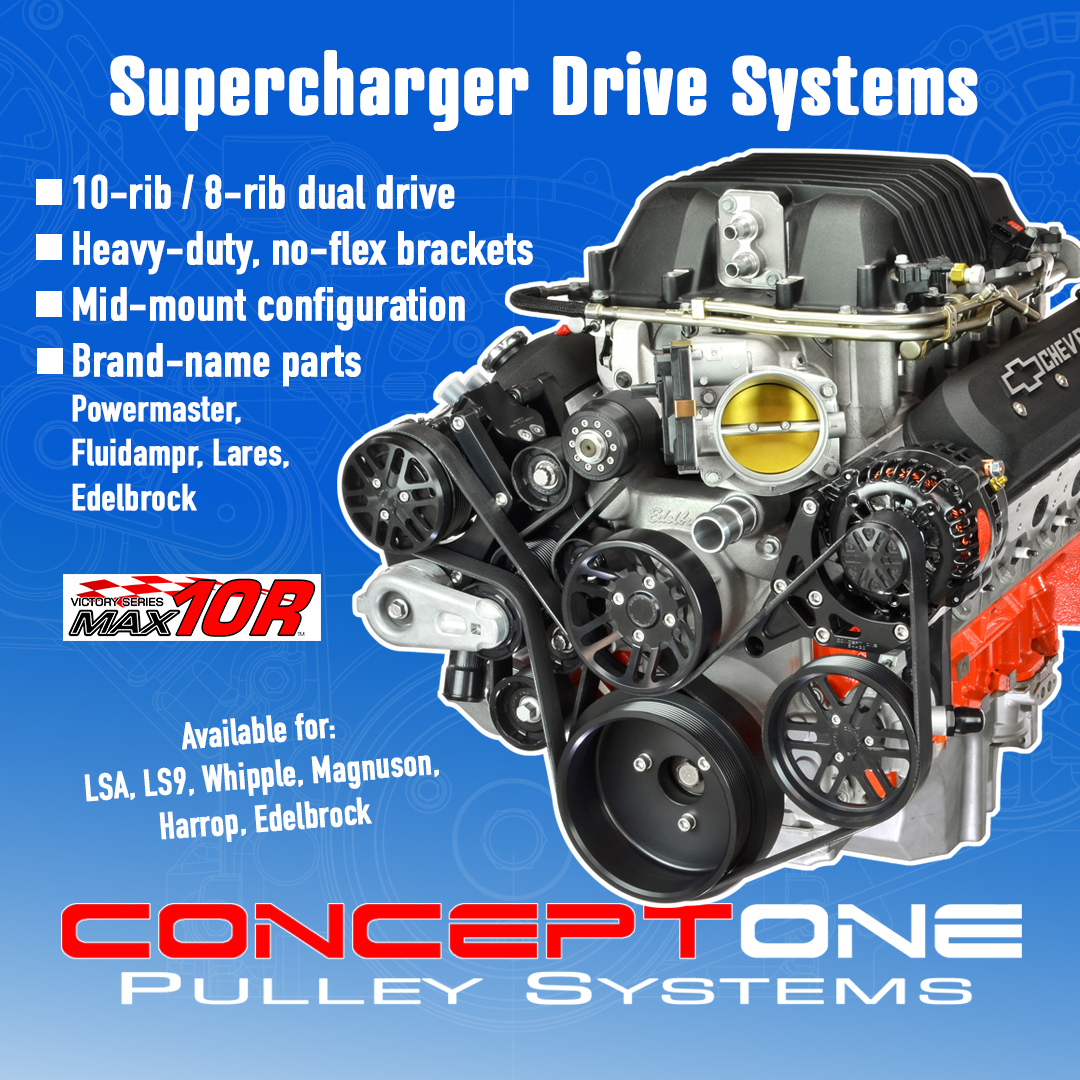By Brian Brennan – Photography By Michael Christensen
Many have heard or said, “This is my last project.” Such is the case for John Mumford from the Bay Area in California. John tells us that this is the last 1932 Ford he will build. When speaking with John’s collaborator on many of these projects, Roy Brizio of Roy Brizio Street Rods, he tells us John has said the same thing to him. Brizio has built 20-plus hot rods for John, including several AMBR contenders, and in 2013 took home the perpetual America’s Most Beautiful Roadster 9-foot trophy. We don’t doubt John’s sincerity, however, we have heard these sentiments. Given John’s passion for hot rods, we will reserve a spot for a future “table of contents” entry for another effort. Brizio agrees!
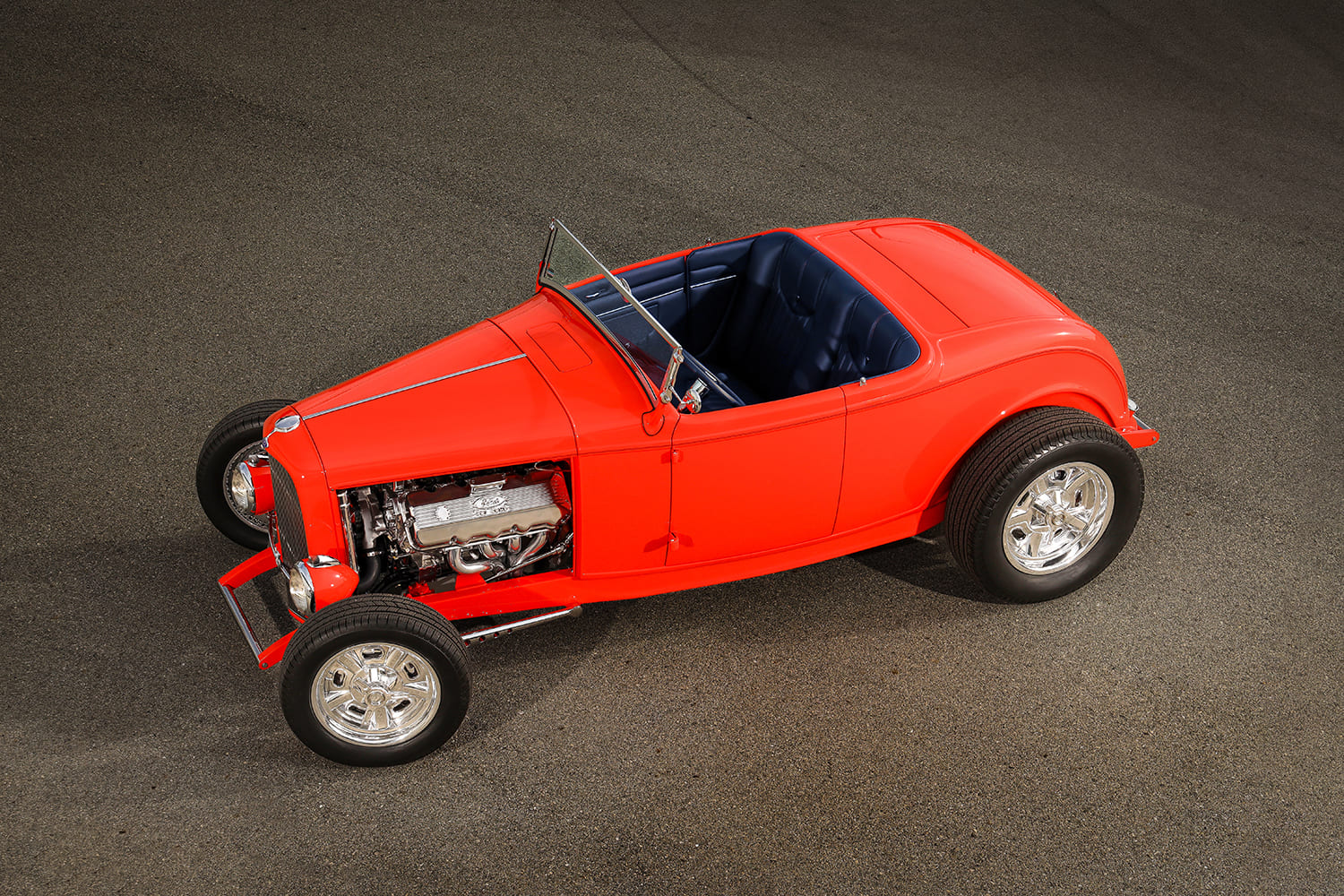
In front of you is John’s “last” 1932 Ford build, a Deuce highboy roadster crafted by Roy Brizio Street Rods with the intent that it will be a turnkey hot rod ready to rumble on any given weekend. At first glance, it closely resembles many other 1932 Ford highboy roadsters featured in numerous hot rod magazines, but there is one notable distinction. Although not unheard of, it is rarely seen: a Ford 427 overhead camshaft (SOHC) big-block engine. It’s not your standard highboy powerplant, but it is a V-8 from the past. Known as the “Cammer,” this engine modified the existing 427 FE “side-oiler” block.
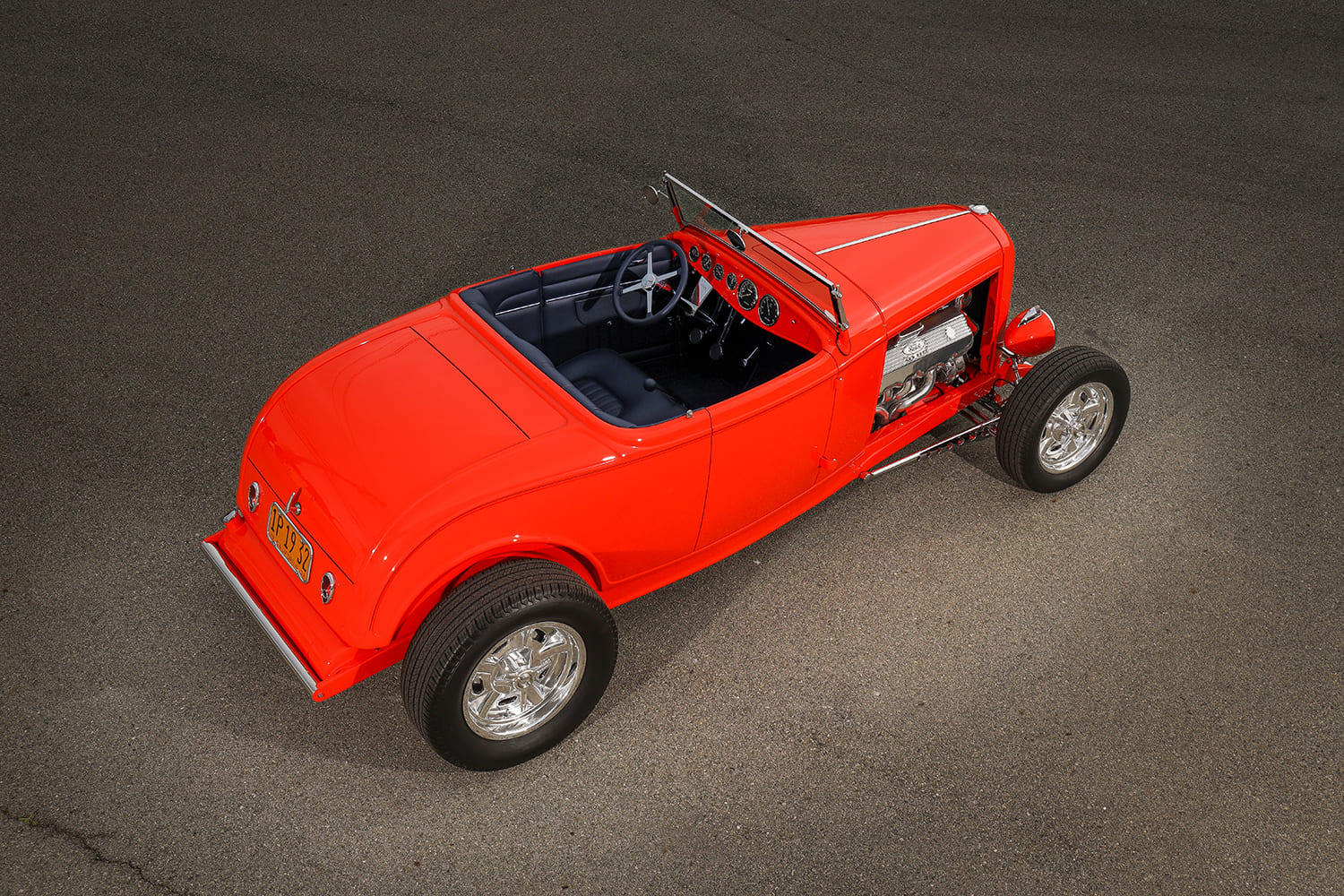
The Ford 427 Cammer engine block was originally made from cast iron, as were the heads, but early on, aluminum heads were also available. But where does one go to find the parts and have a reliable Cammer built? Talk about a specialty engine.
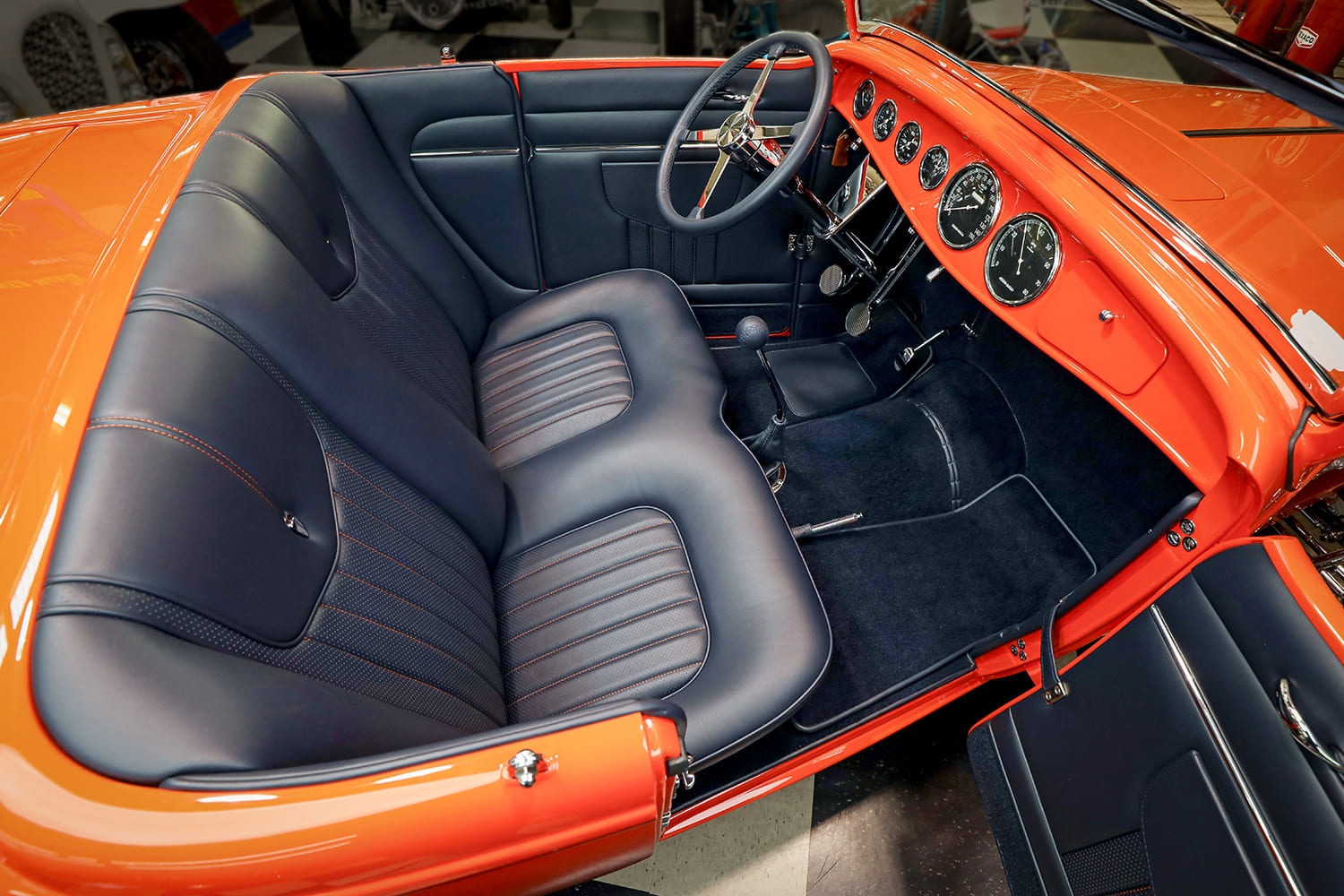
The first and only stop was to see Ed Pink and Bob Brandt of Ed Pink’s Garage. Pink tells us that this is the last Cammer he will build in his illustrious career. (He’s in his early nineties and figures it’s time to enjoy the open road a bit more with his 1929 Ford highboy roadster, another Brizio statement hot rod.) The 427 SOHC Cammer is familiar territory for him and his partner, Brandt, at the “Garage.”
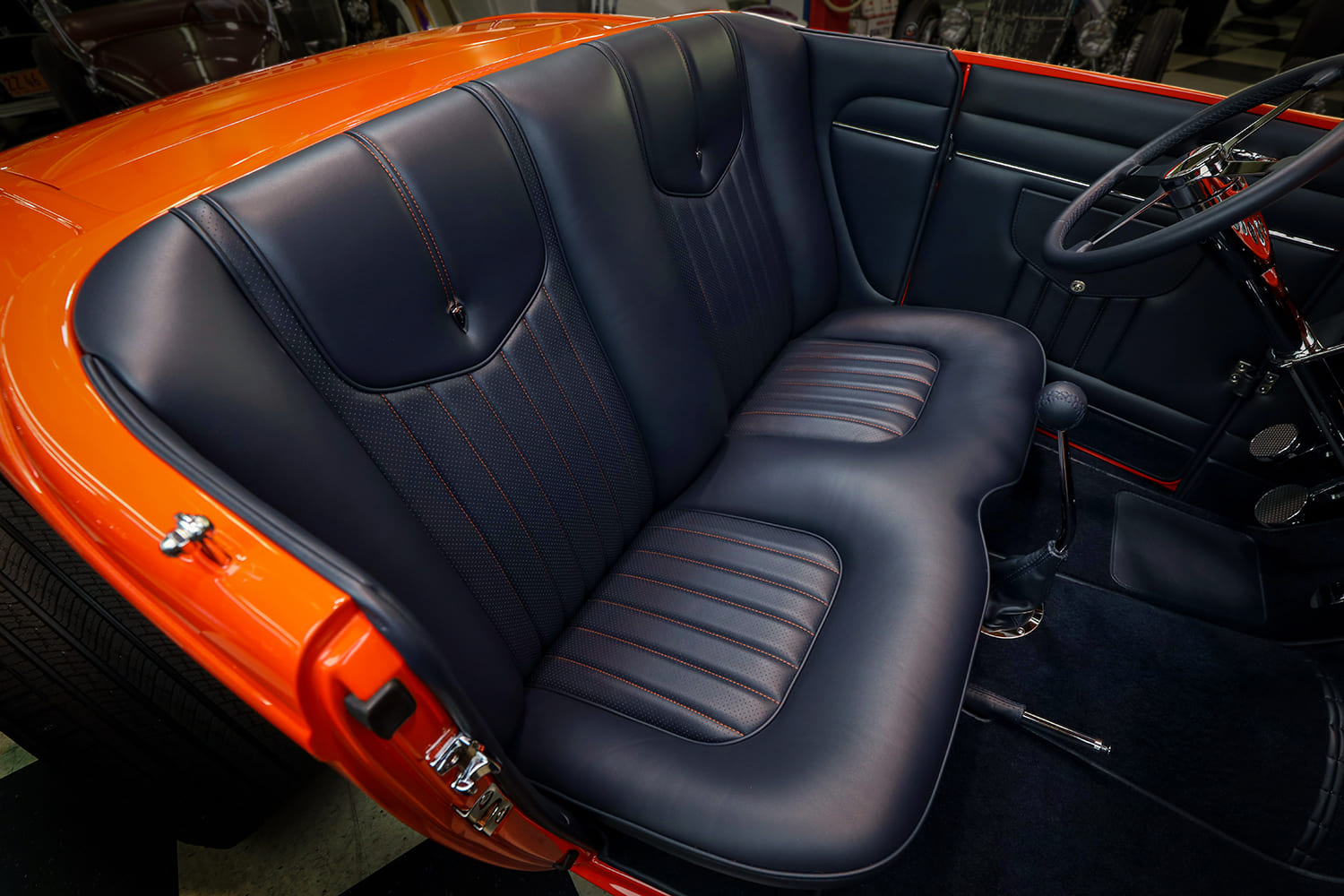
Pink and Brandt have developed a street package for a Ford SOHC Cammer V-8. However, this latest build for John and Brizio wasn’t your basic, if such a thing exists, Ford 427 SOHC V-8. This time, Robert Pond Motorsports (RPM) was brought in, along with one of their aluminum blocks and a pair of heads.
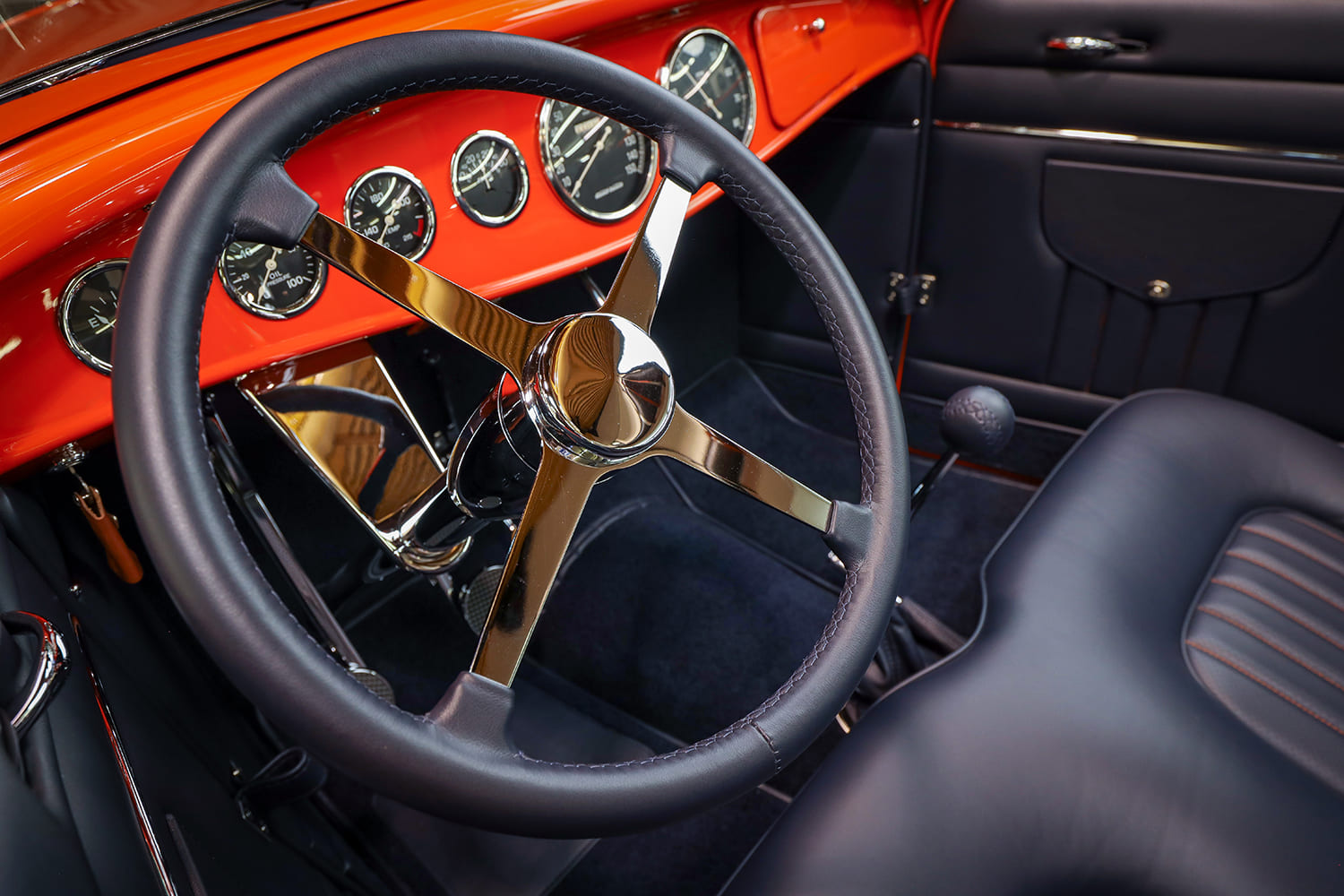
A little background. In the world of hot rodding, there’s a legendary powerplant known simply as the “Cammer.” The 427 Ford SOHC block was developed using the overhead cam variant of the classic FE block. According to Ford records, approximately 500 Cammers were produced. The Cammer drew its inspiration from the side-oiler 427 design, while the SOHC combines the advanced features of Ford’s 255-cid cylinder heads with DOHC hemispherical combustion chamber technology. RPM tells us that their Cammer package is capable of revving to 7,000 rpm.
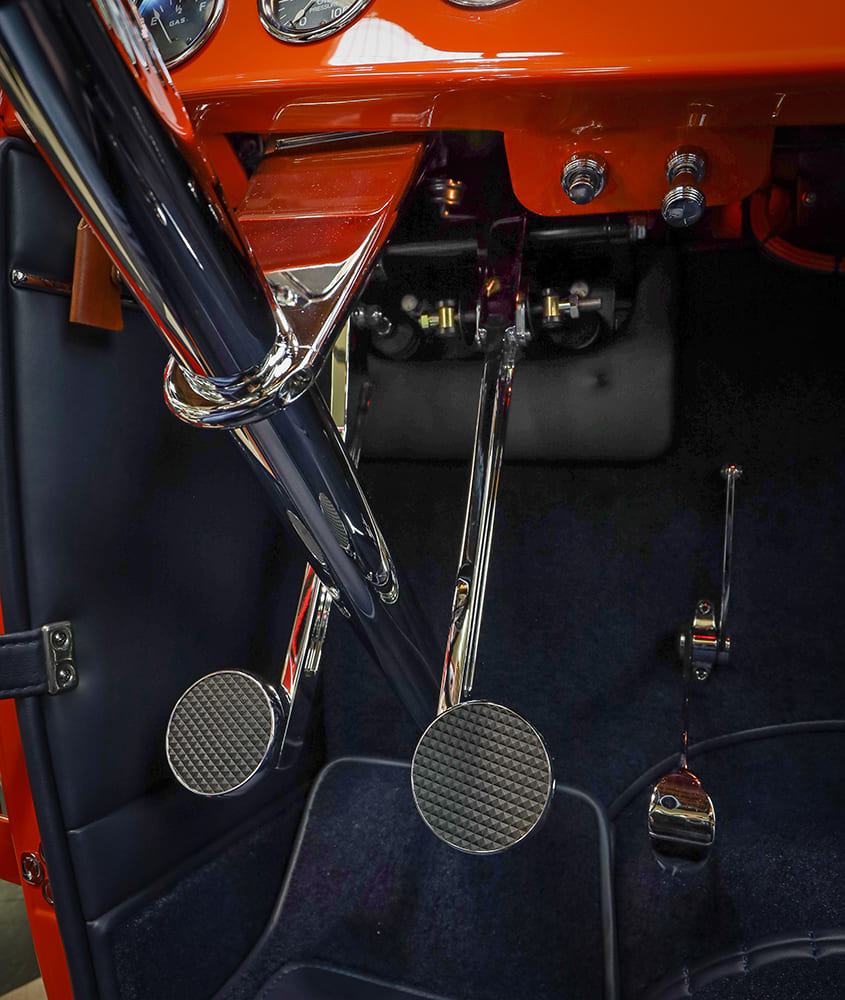
RPM offers the Cammer block and heads in aluminum and cast iron (like the original), but they weigh an additional 2 to 3 pounds due to the lack of lifter provisions. A special oil return hole at the back of the block also distinguishes it. RPM provides 427 SOHC cylinder heads, which are direct replacements for the original heads but enhanced with five extra boltholes for superior gasket sealing. It’s important to note that ARP hardware is used on the heads and throughout the engine build. These heads are CNC ported for about 15 percent improved performance compared to stock.
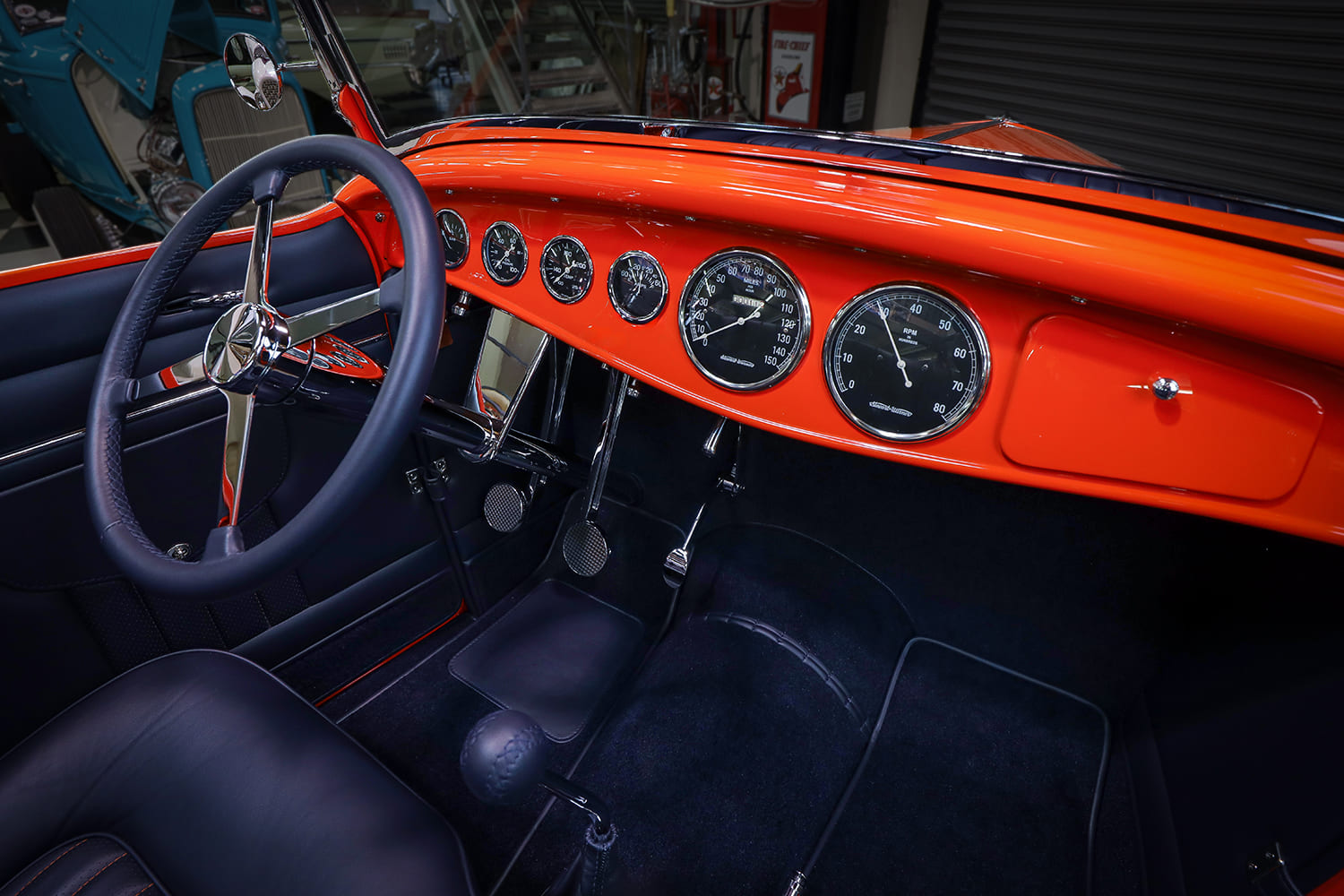
Engineered with a 1/2-inch-thick deck and reinforced cam towers, these heads come bare and are fitted with 11/32 guides and a 119cc chamber, making them the best and strongest SOHC heads ever. They include billet cam bearing caps to ensure durability under pressure. Topping off the massive aluminum cylinder heads are polished aluminum RPM valve covers that reflect the lineage of this powerful V-8. Other internals feature forged aluminum 9-to-1 pistons and a custom Ed Pink’s Garage cam grind. The Pink team selected the RPM Cammer aluminum block with a 4.232-inch bore and 3.785-inch stroke (like the original). Still, it can be expanded to a bore of 4.310 inches with a 4.375 crankshaft capable of achieving 510 ci. The SOHC also utilizes a remote oil filter system.
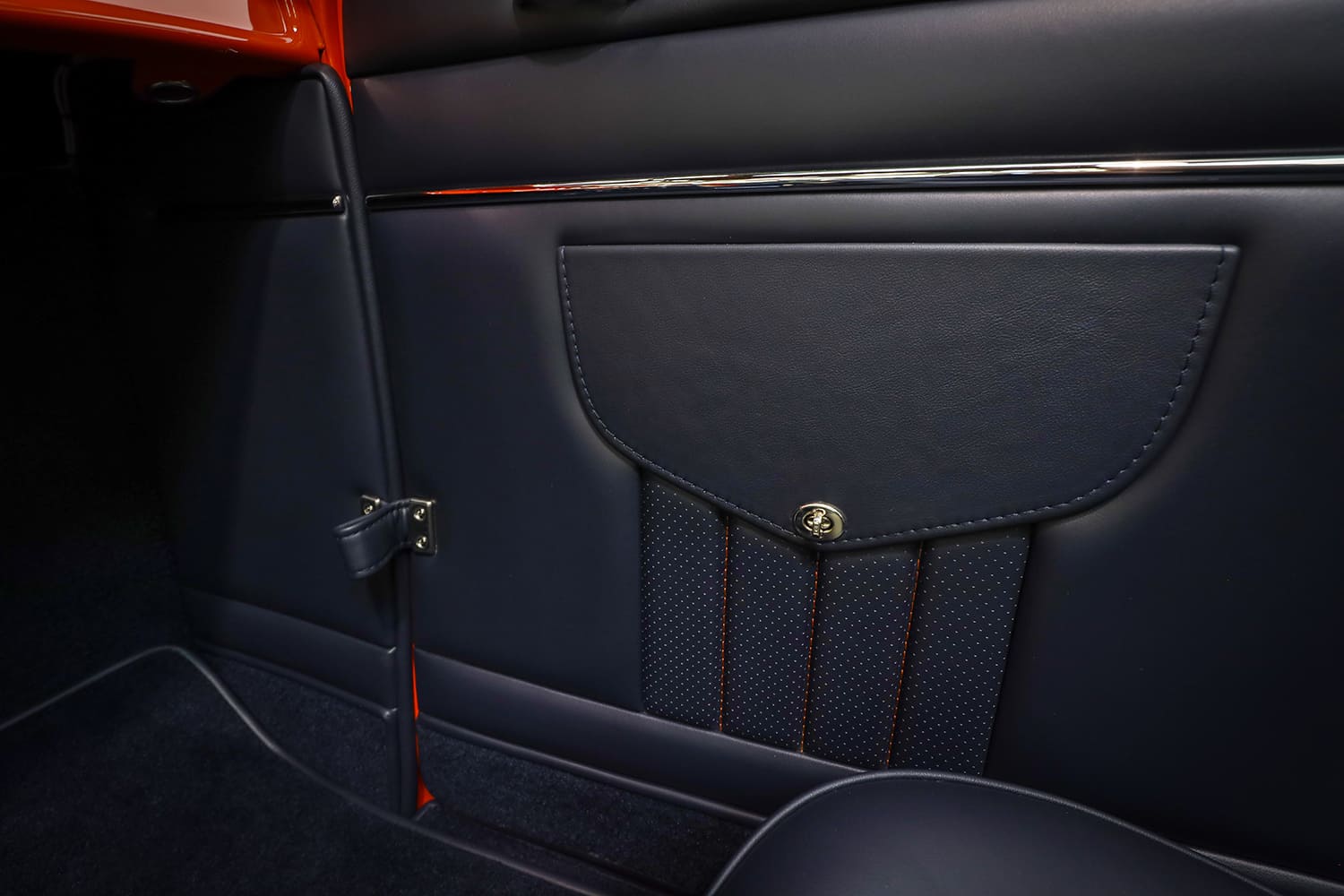
The Hilborn eight-stack EFI is stunning in both appearance and performance. (Wouldn’t you like to be there when Mumford puts his foot into this “beast”?) The Hilborn EFI’s electrics are based on a Holley HP EFI ECU (computer) and a custom harness by Dave Erlich of Autotrend EFI. An electronic crank trigger and GM coils manage spark and timing. The water pump is an aluminum RPM unit that is used along with a Powermaster starter and alternator, as well as a trunk-mounted OPTIMA battery.
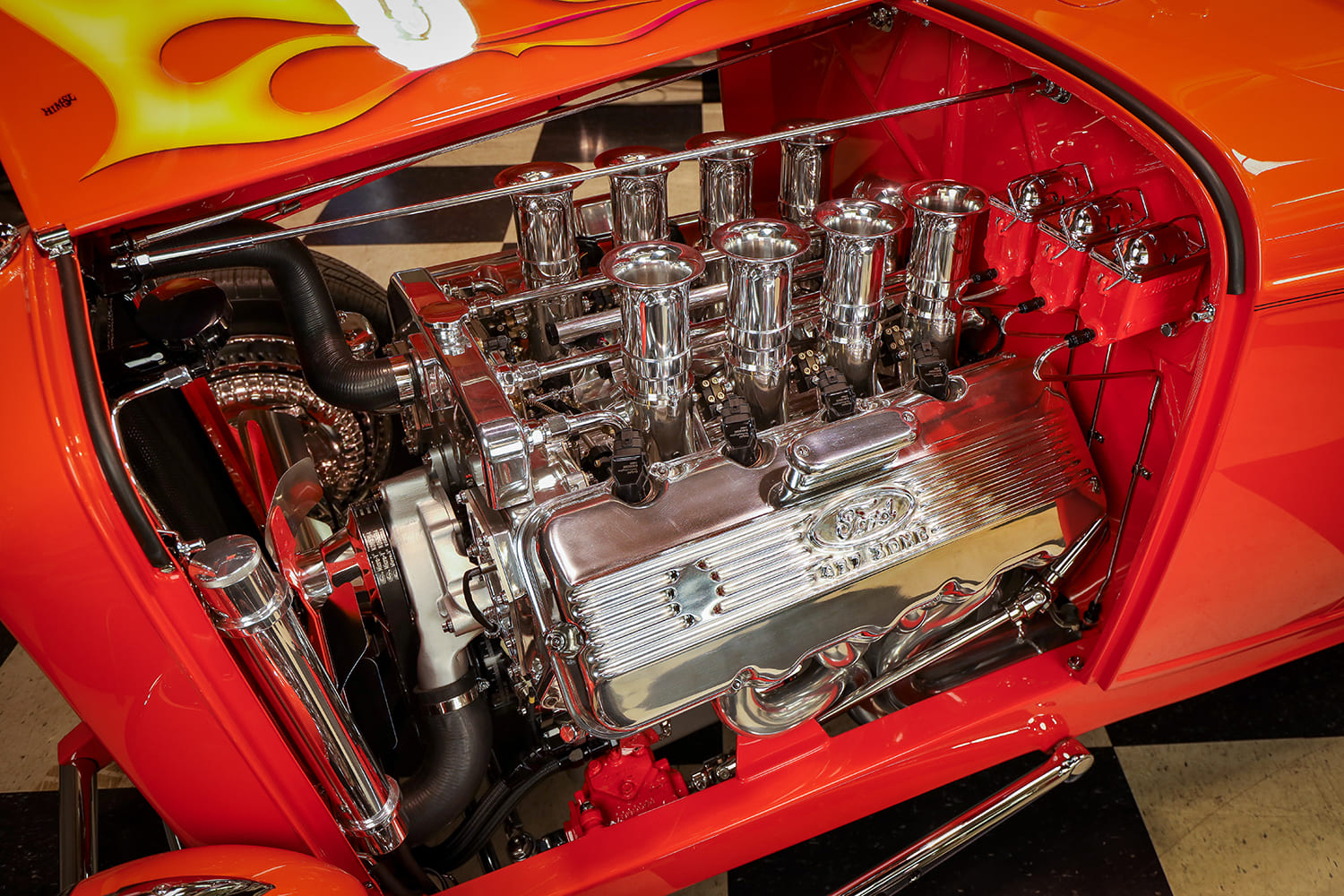
Carlos Ponce of Sanderson Headers fabricated the 1-7/8-inch primary tubes into headers, and then Jack Stratton of RBSR created 2-1/2-inch exhaust pipes. The exhaust system flows into a pair of Flowmaster Hushpower II mufflers. Notably, Sanderson also ceramic coated the exhaust system.
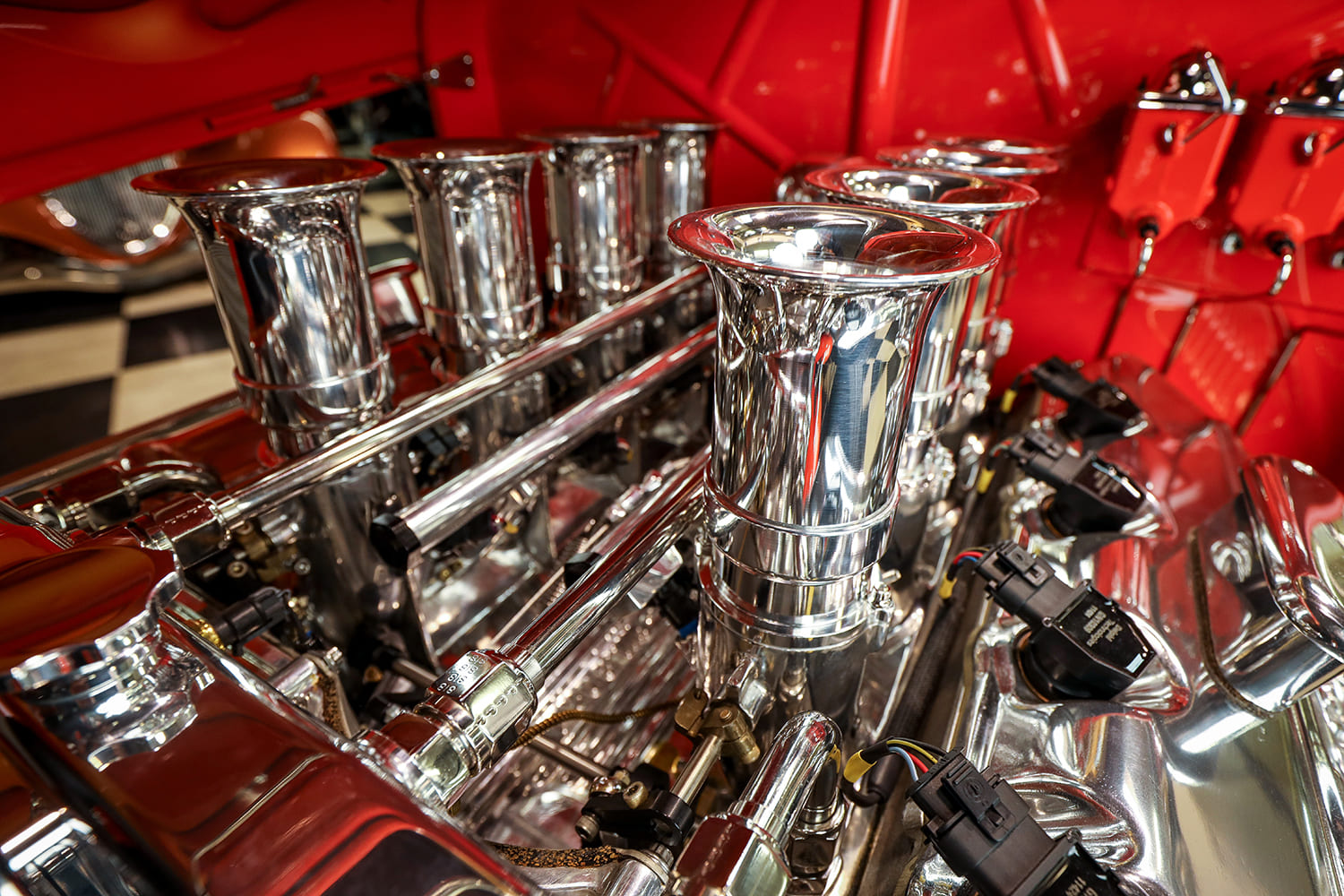
Connected to the Cammer is a TREMEC TKO 600 five-speed utilizing a Modern Driveline package with a clutch, pressure plate, and a billet flywheel. A Lokar shifter with a leather-wrapped shift ball is also present to help you select the proper gear. Linking the powertrain is a custom steel driveshaft leading to the polished and painted Winters Champ quick-change that houses 3:78 gears and Winters 31-spline axles.
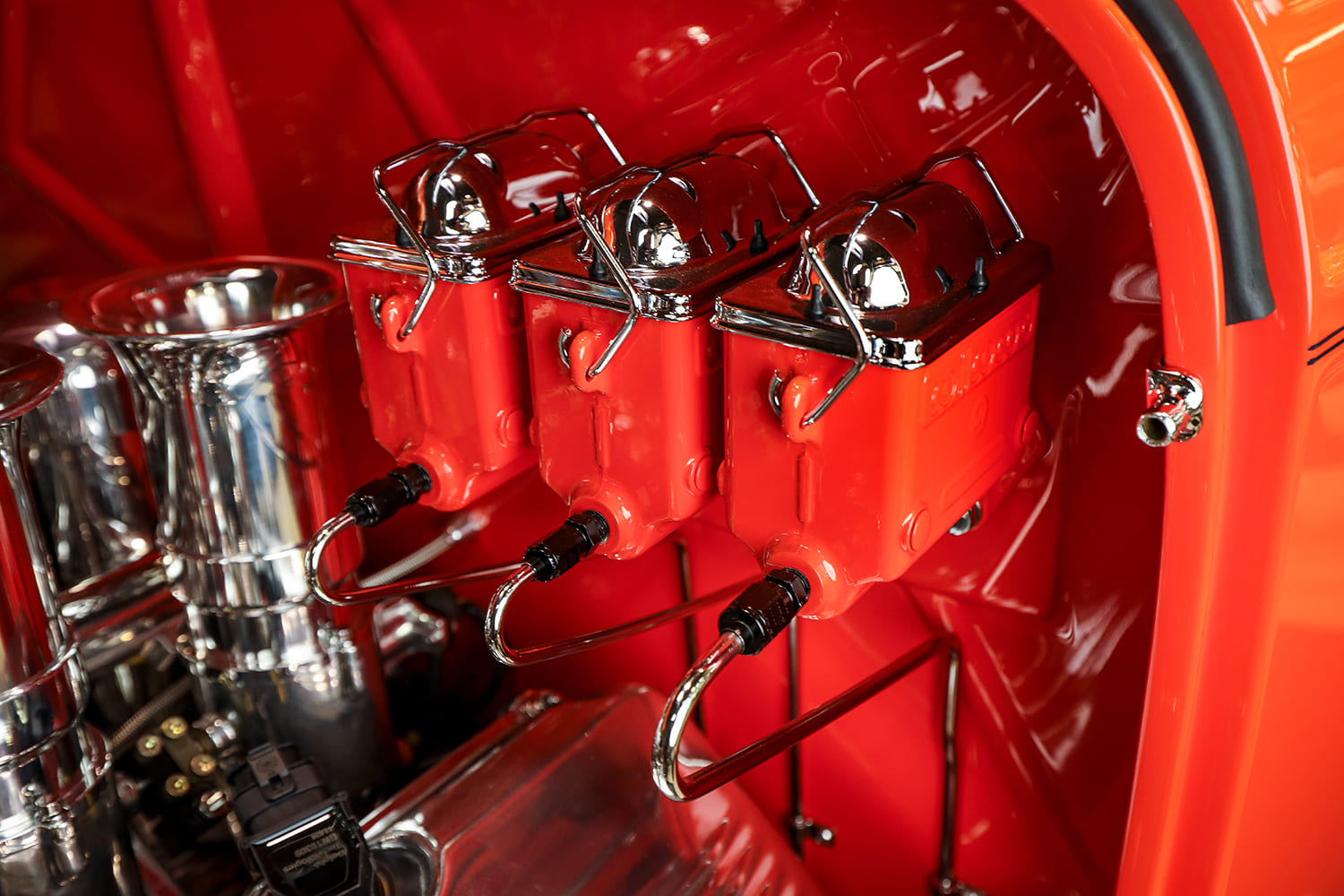
The frame is constructed with a Total Cost Involved set of Deuce boxed ’rails, featuring 1-1/2-inch tube crossmembers. Stratton of RBSR was responsible for the chassis and ensured the installation of an 11-gallon gas tank from Tanks, which rests in its factory location at the rear between the framerails. At the front is a chrome 5-inch drop Super Bell I-beam axle paired with Super Bell spindles, QA1 adjustable tube shocks, and a chrome-plated multi-leaf transverse spring equipped with reversed eye shackles.
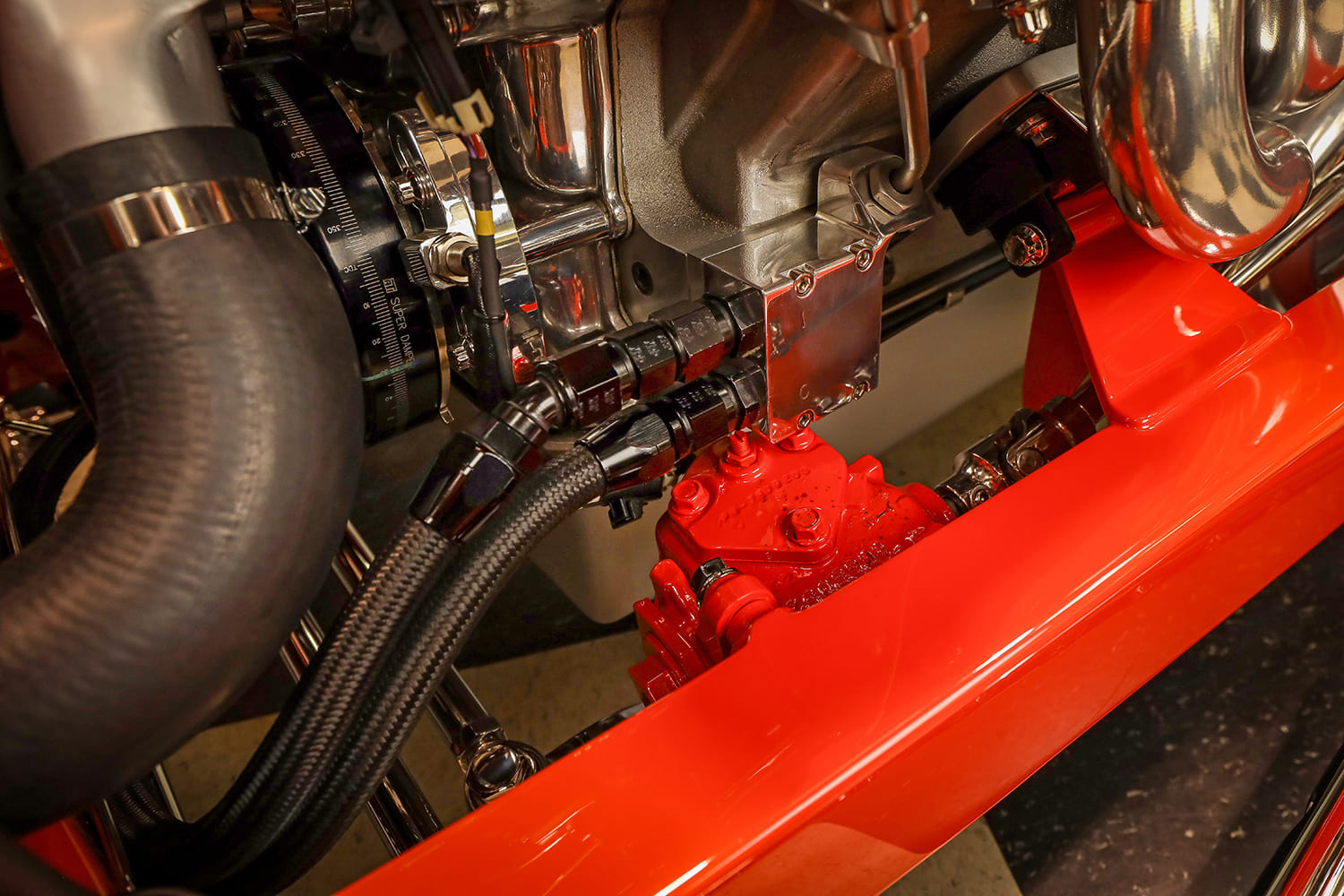
The remainder of the front suspension features plated and drilled radius rods from Johnson’s Hot Rod Shop (JHRS), Borgeson-Vega steering, and a Mullins column. The rear suspension includes JHRS chrome ladder bars, a 3/4-inch sway bar, QA1 coilover shocks with 220-pound coils, and an RBSR Panhard bar.
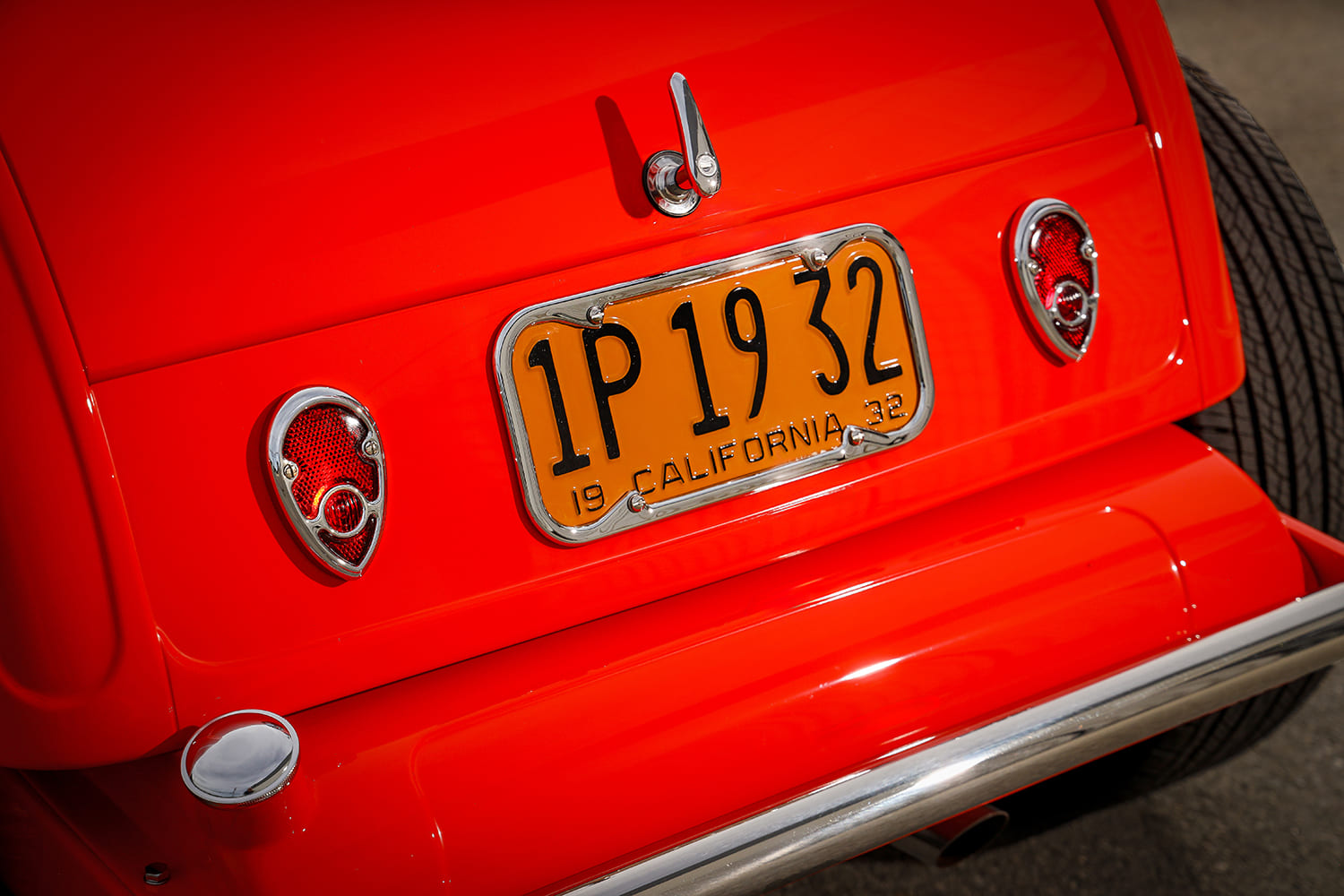
The braking system utilizes the JHRS Kinmont Safety Stop disc brake kit (with Wilwood calipers and 10.5-inch vented rotors), complemented by Wilwood multiple reservoir master cylinders (for brake and clutch) and Moal Coachworks swing pedals. At the corners is a complete set of E.T. Indy-style polished billet wheels measuring 5.5×16 and 7×18, while Michelin 205/60R16 and 265/65R18 tires with scrubbed sidewalls provide the rolling stock.
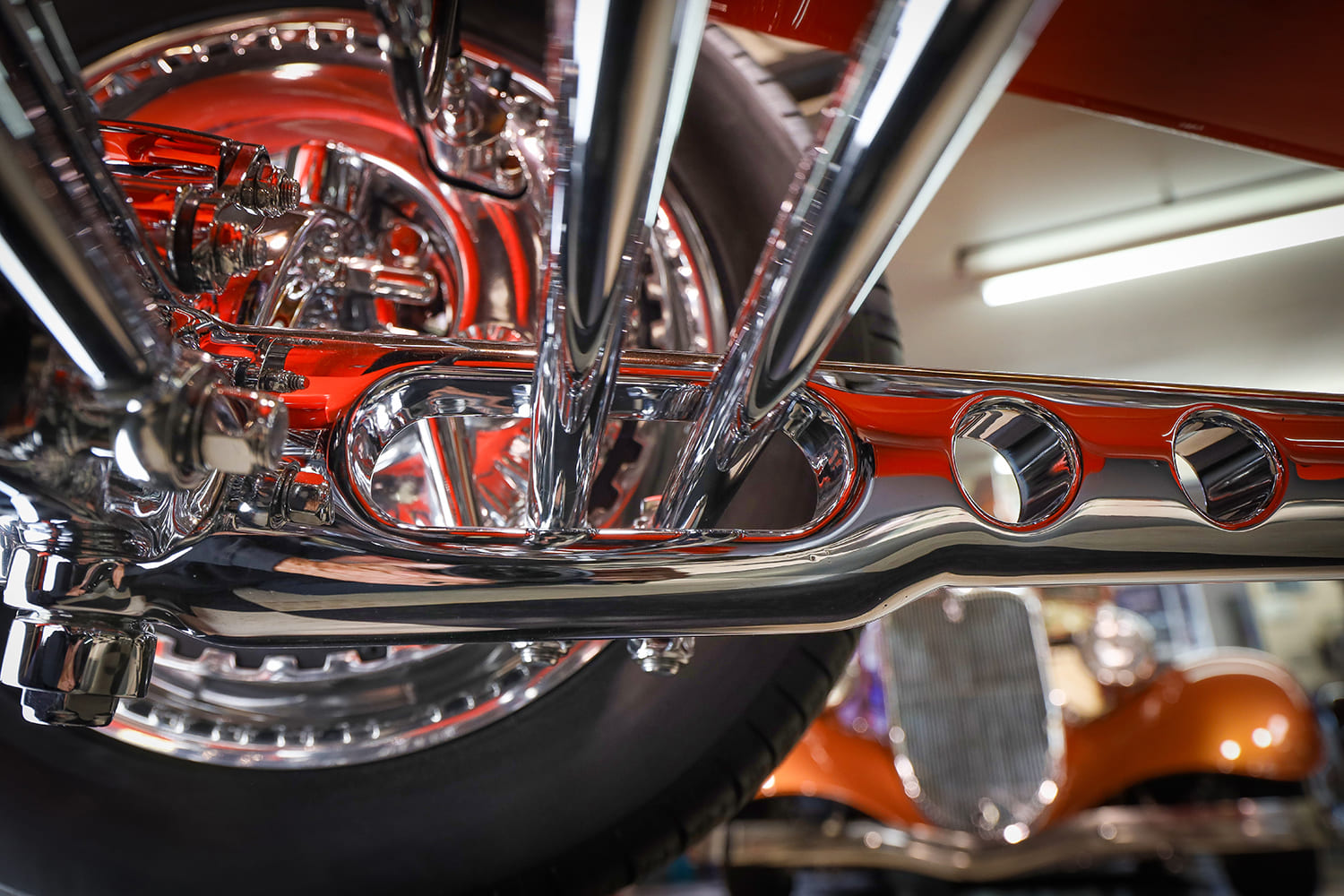
The Deuce body is an original 1932 Ford roadster that has maintained its original lines. It was metal finished by Andrik Albor of RBSR. Then, the roadster was sent to Darryl Hollenbeck of Vintage Color for the final bodywork and waterborne PPG Envirobase Hugger Orange application. Inside, the hood top panels are flamed by Art Himsl. How cool is that! There are no hood side panels, as the robust Cammer cylinder heads and valve covers stick out, alerting everyone to the fact that there lies a monstrous piece of vintage hot rod V-8 history.
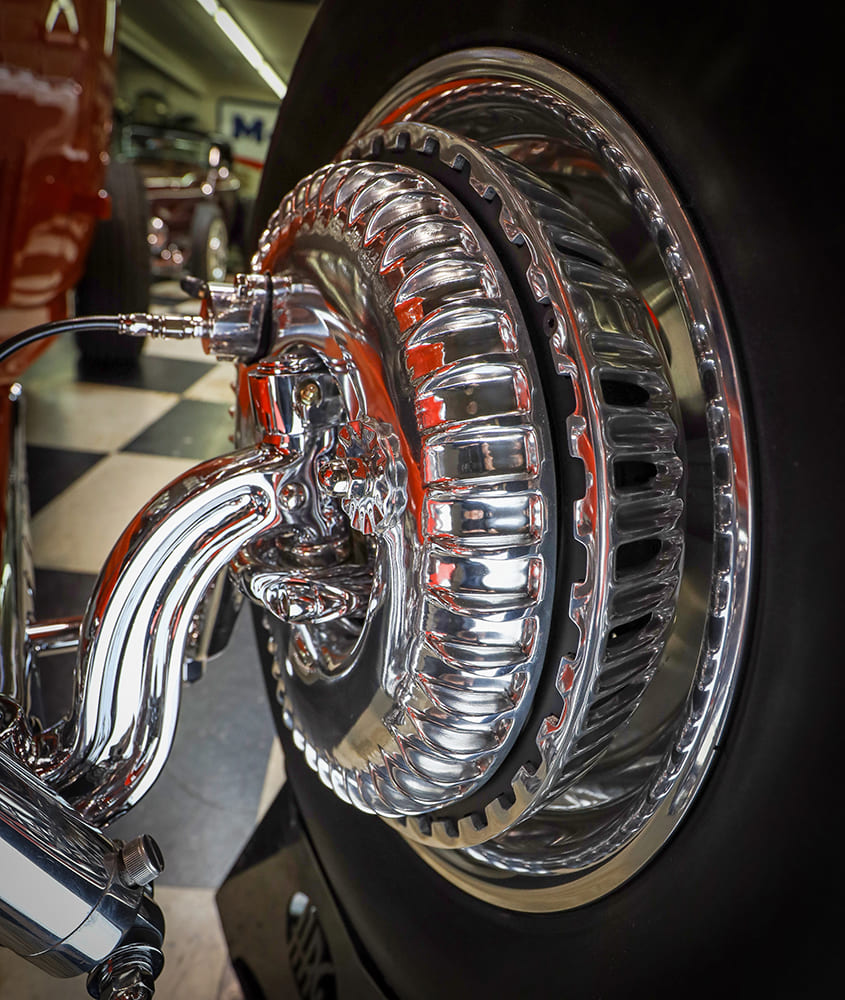
The dashboard is a steel reproduction of a Brookville Roadster piece that now houses a restored, original, large-diameter six-pack of Stewart-Warner gauges by The Gauge Guy. Note the roadster does have the Moal Coachworks pedal assembly with a Lokar “spoon” throttle. Jim Vickery of RBSR wired the roadster by installing a custom wire system that runs from front to rear. Another notable interior piece is the Mullins steering column, featuring a Bell four-spoke leather-wrapped wheel.
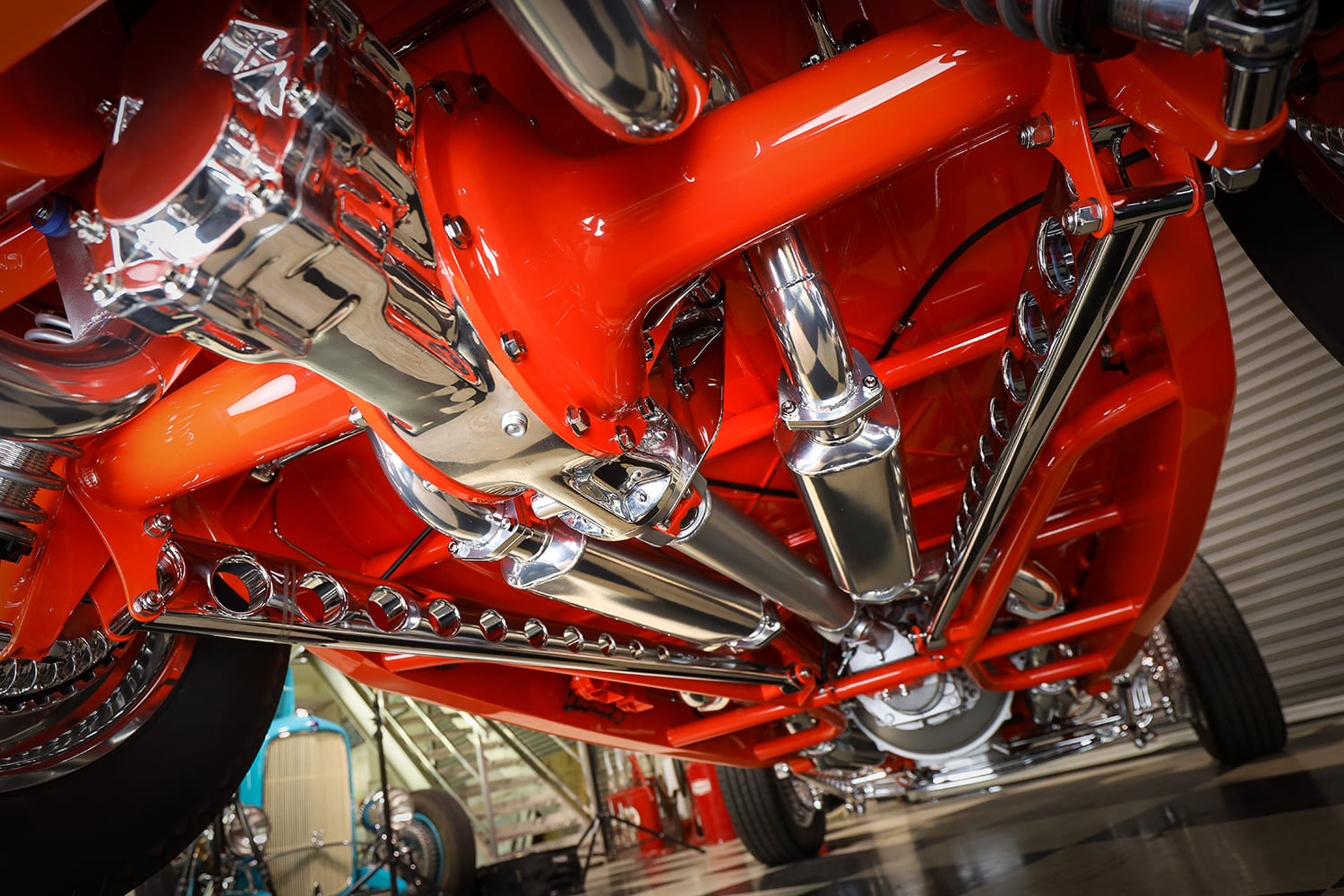
The custom bench seat was stitched in dark blue leather by Sid Chavers of Sid Chavers Co. John tells us he has no plans for ever putting a top on this hot rod. (Editor’s note: You must like those highboy roadster drivers–a brave lot.) There will be plenty of cool breeze on one’s face and bugs in the teeth for this hot rodder.
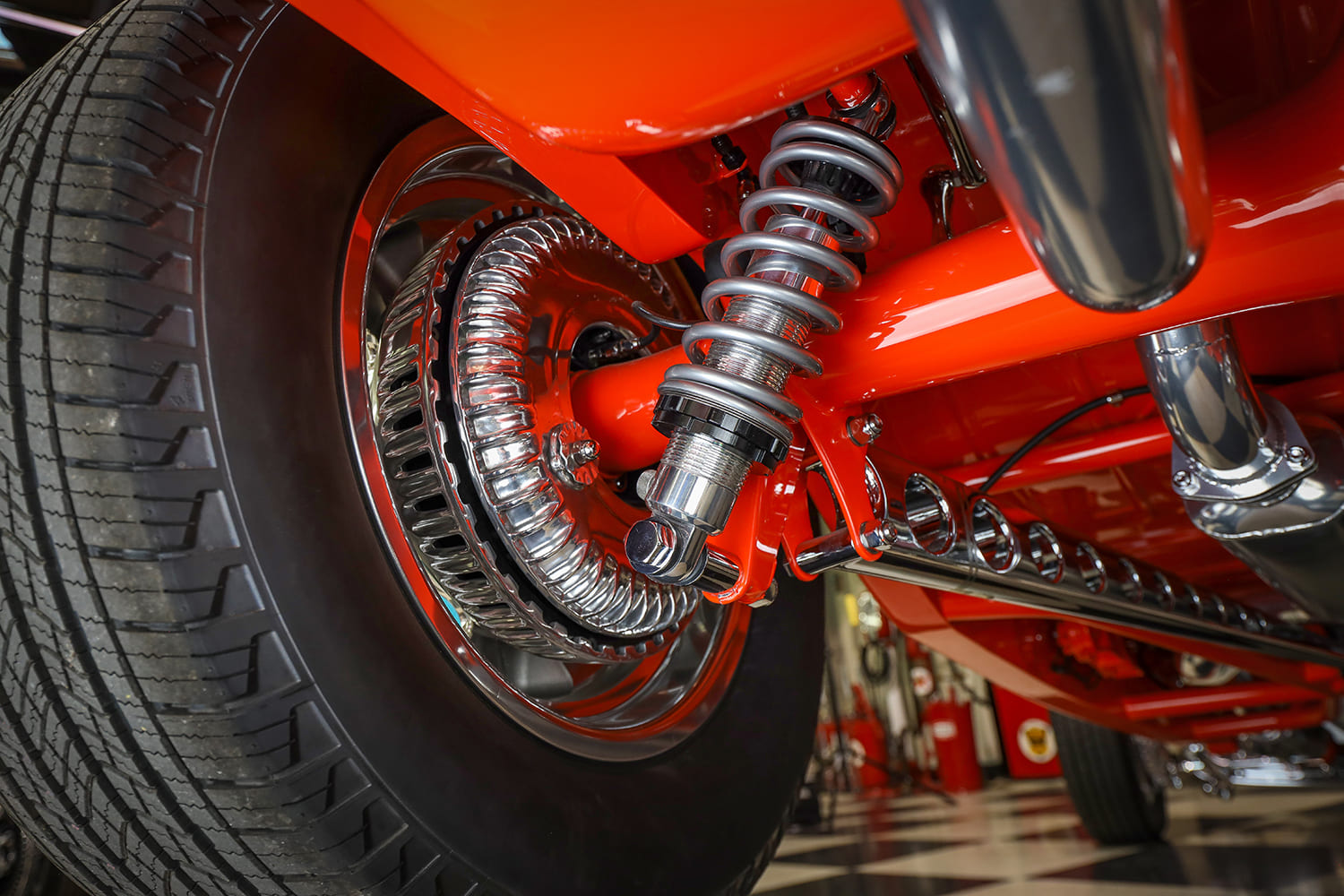
We hope this isn’t John’s last 1932 Ford, but if it is, what a way to go out! The roadster did take home Best Interior and Best Undercarriage in 2025’s AMBR competition. Not bad for an everyday driver with all 650 hp!
-MR
Check out this story in our digital edition here.











